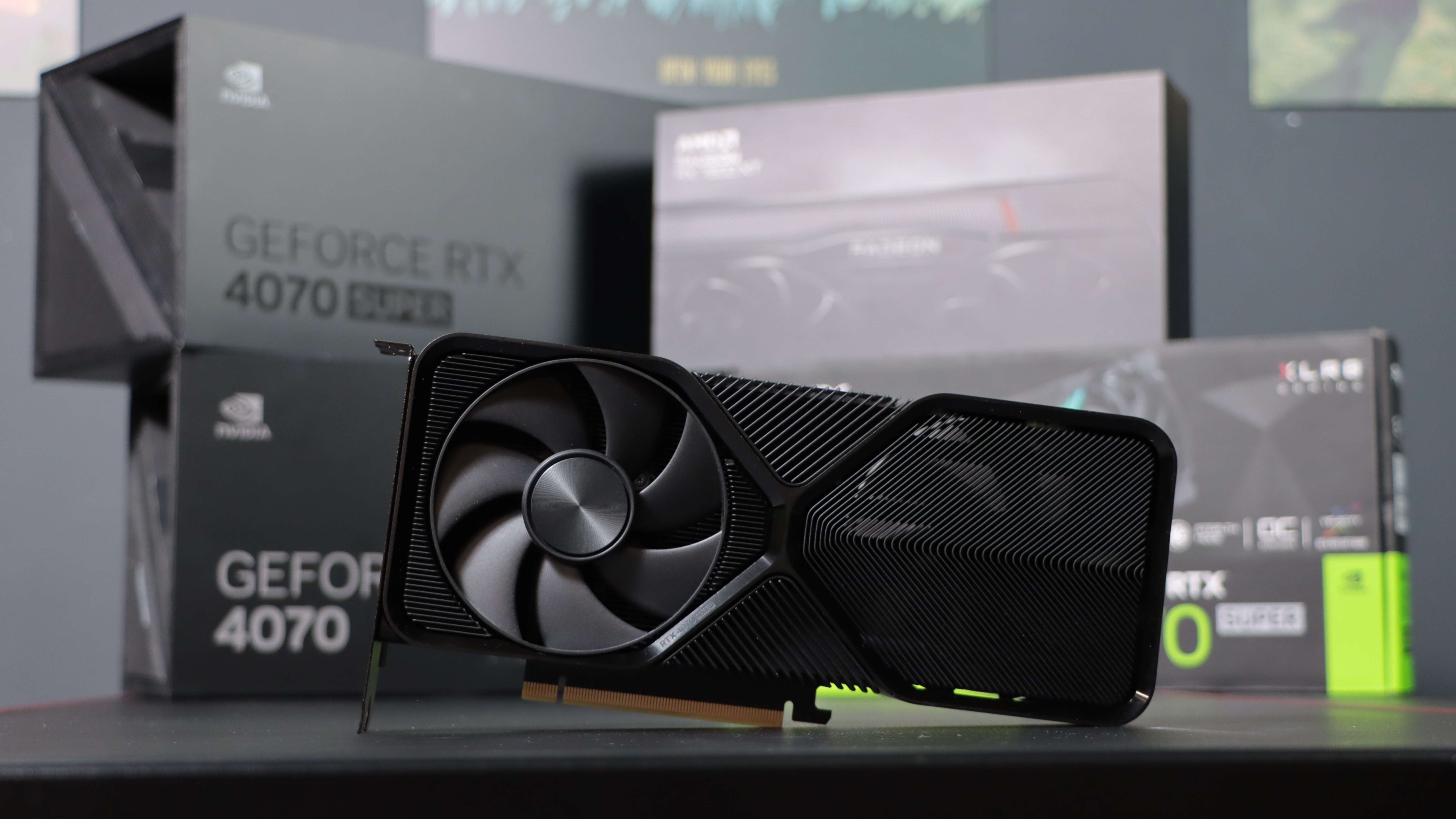
Hold on tight, because 2024 is kicking off with a bang. I don't remember another January that landed with four new graphics cards all launching within the same month, with this RTX 4070 Super being the first of Nvidia's three Super GPUs to line up for their January spotlight. And it could be the finest of the lot.
On the surface, it's had the biggest upgrade in terms of a straight core-count boost compared to its non-Super sibling, and it does indeed deliver a fairly sizable frame rate improvement over the RTX 4070, too. But it's also making inroads on the performance of the RTX 4070 Ti.
That original RTX 4070 was one of my favourite graphics cards from the first flush of GPUs from the Nvidia Ada architecture generation. Big boi RTX 4090 aside, it was the one that felt like it really delivered on the promise of a proper generational improvement over its Ampere forbear.
The RTX 4070 was effectively a much cheaper RTX 3080, with more memory, and with all the benefits of the next-gen GPUs. That meant lower power, higher clocks, and all the performance-enhancing goodness of Frame Generation. I've always referred to it as an RTX 3080 with benefits.
And at its $599 launch price, comfortably below what the RTX 3080 released at, it's always felt like a really solid upgrade for anyone coming from an RTX 20-series or lower order RTX 30-series card. And this RTX 4070 Super has launched with its own benefits—to the point where it's more like an RTX 4070 Ti Lite—as well as looking rather fetching in its new matte black Founders Edition shroud.
Nvidia RTX 4070 Super quick verdict

✅ You're still rocking an RTX 20-series card: Stepping up from any Turing GPU you will get an outstanding frame rate uplift, especially if you take the extra DLSS and Frame Gen performance frosting into account. It's also a healthy step up from most RTX 30-series cards, too, even something so stellar as the old RTX 3080 Ti.
❌ You've paid out for any RTX 40-series GPU: The Super series is always a relatively modest, inter-generational update, designed to entice anyone who hasn't already made the move to the latest GPU architecture rather than those who did.
❌ The RTX 4070 drops below $499: With only an 18% performance delta at most, the RTX 4070 becomes a very tantalising alternative if it continues to drop in price beyond the $549 MSRP Nvidia has tentatively set it at.
The RTX 4070 Super is a smartly respecced graphics card, one that lays the foundation for a very welcome refresh of Nvidia's Ada lineup. With this first Super card, and the ones that follow it, the RTX 40-series is finally starting to resemble the GPU generation we'd hoped it would be.
This card is actually closer to the RTX 4070 Ti in GPU specs and performance than it is to the RTX 4070, which is honestly the way around we'd prefer it. So, where the original was an RTX 3080 with benefits, this is more akin to an RTX 3080 Ti replacement, and in real terms actually outperforms it quite considerably and all while only using almost half the power.
But where the RTX 4070 Super is eating into the performance lead of the soon-to-be-dead RTX 4070 Ti, there are still another two graphics cards that are causing it problems; one from AMD and the erstwhile Nvidia mid-ranger it should have been entirely replacing. While the RTX 4070 Ti and RTX 4080 are being killed off by their Super replacements, the RTX 4070 remains, and even gets a price cut down to an initial $549.
That's surely down to the RX 7800 XT offering similar performance for $499, meaning Nvidia both needs to keep a card within touching distance of it in terms of pricing and have the new RTX 4070 Super putting clear air between them in gaming frame rate terms.
And this Super card does that, though I can't shake the feeling that this would have been an absolute slam dunk of a GPU release if the green team had been braver and retired the original card in favour of the RTX 4070 Super, and given that the $549 price tag instead. As it is, it still has the older sibling stalking it at a cheaper price point and with only a 10% delta in performance.
And if that one drops further to $499 or beyond, the RTX 4070 will be super tempting even after this Super release.
Nvidia RTX 4070 Super specs
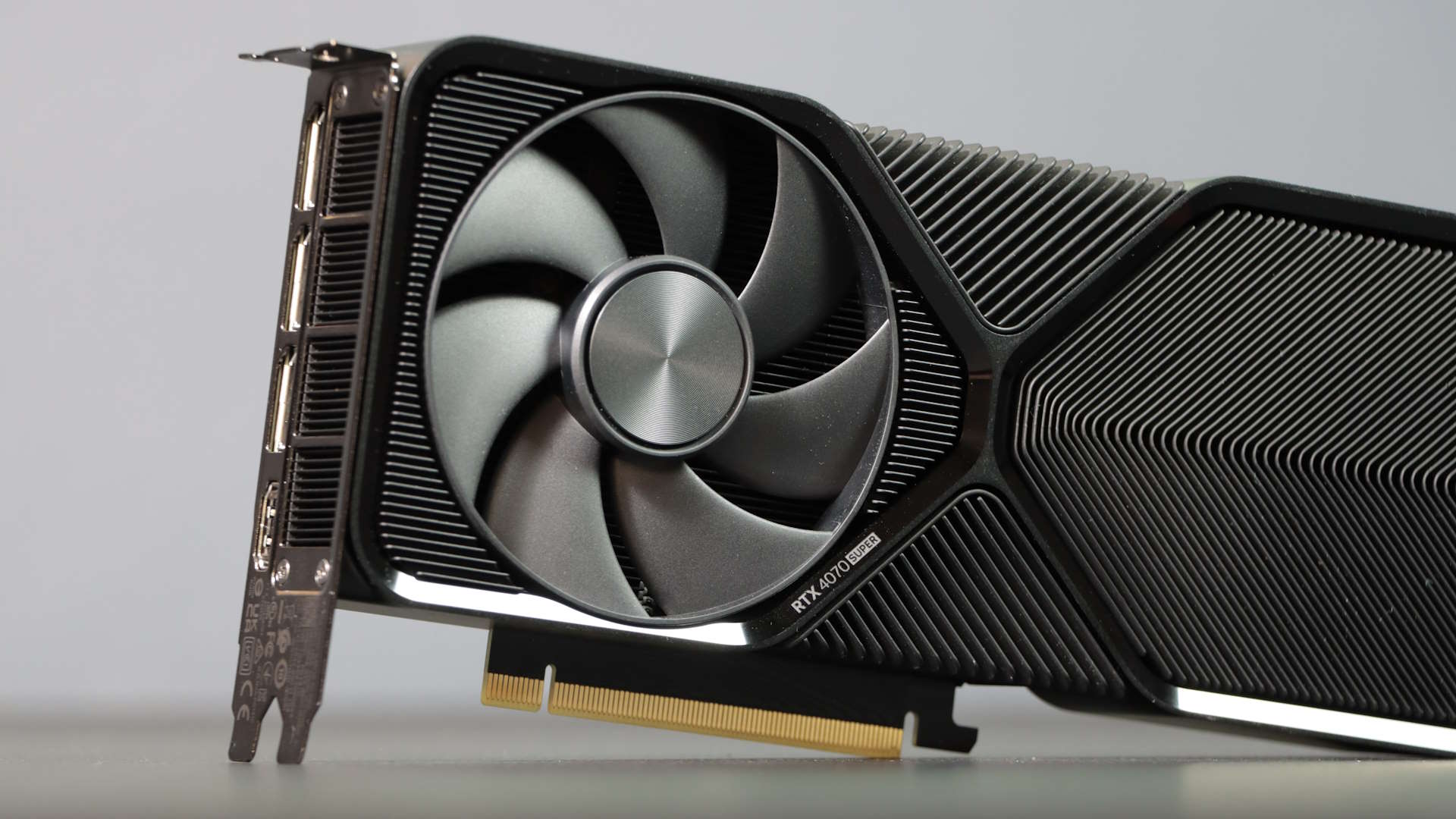
The RTX 4070 Super is still using the same AD104 GPU as the original card, but Nvidia has enabled an entire new graphics processing cluster (GPC) for the chip. That gives it another ten streaming multiprocessors (SMs) and therefore another 1,280 CUDA cores, or around 22% more shaders.
That makes the chip as a whole far closer to the RTX 4070 Ti in terms of actual core makeup, and indeed in terms of performance, than the original RTX 4070. But there are two key specs in the new Super card's makeup that both highlight why it can get so close to the higher-spec GPU, and why it can't quite catch up despite being so close in terms of core count.
The two pillars of the Ada architecture's generational performance gains over Nvidia's Ampere GPUs have been higher clock speeds—thanks to the more lithe TSMC 4N production process—and the extra L2 cache memory the green team has jammed into its latest graphics processors.
Despite initial information from Nvidia pointing to a stagnant pool of L2 cache—originally suggesting the RTX 4070 Super sporting the same 36MB as the original GPU—it has now corrected that spec just ahead of launch. The AD104 inside the RTX 4070 Super actually has the same 48MB L2 cache as the RTX 4070 Ti, and that's one of the main reasons it can get to within a whisker of the older card's performance.
If it had stuck with the same 36MB L2 as the RTX 4070 there would have been a bit of a fight on with five GPCs now battling for the same shared cache resources as had previously been available to four GPCs. And that would have meant more cache misses as the different parts of the chip fought for the same shared resources and spent more precious processing time going out to the slower VRAM.
But it's important to note you're not getting the same clock speed the RTX 4070 Ti enjoys. With the RTX 4070 you were looking at around a 1GHz frequency bump over the RTX 3070 and RTX 3080, and that remains the same with the RTX 4070 Super, but the Ti card went further. The clock speeds here haven't increased along with the core count, with the base clock getting a nominal 60MHz uplift, while the rated boost clock remains the same between this and the Founders Edition of the RTX 4070.
So yeah, there's really very little between the RTX 4070 Super and the Ti version.
Its 220W TGP may be higher than before, but it's way off the 285W TGP of the RTX 4070 Ti and its new Super replacement, and that's one of the big reasons why the RTX 4070 Super is unable to hit the same frequency heights as its older sibling.
Our RTX 4070 Ti was able to post an average GPU frequency, in game testing scenarios, of 2,806MHz, while the RTX 4070 Super is actually a bit lower even than the standard RTX 4070 Founders Edition, and more than 250MHz behind the RTX 4070 Ti.
Though nothing's changed in the memory subsystem. There's still the same 12GB GDDR6X memory, running at 21Gbps, all played out across an aggregated 192-bit memory bus, with the same 504GB/s of bandwidth.
So yeah, there's really very little between the RTX 4070 Super and the Ti version, and it's really all boiling down to the extra power being jammed into the bigger card, its bigger cooling array, and therefore the higher sustained clock speeds.
Nvidia RTX 4070 Super benchmarks
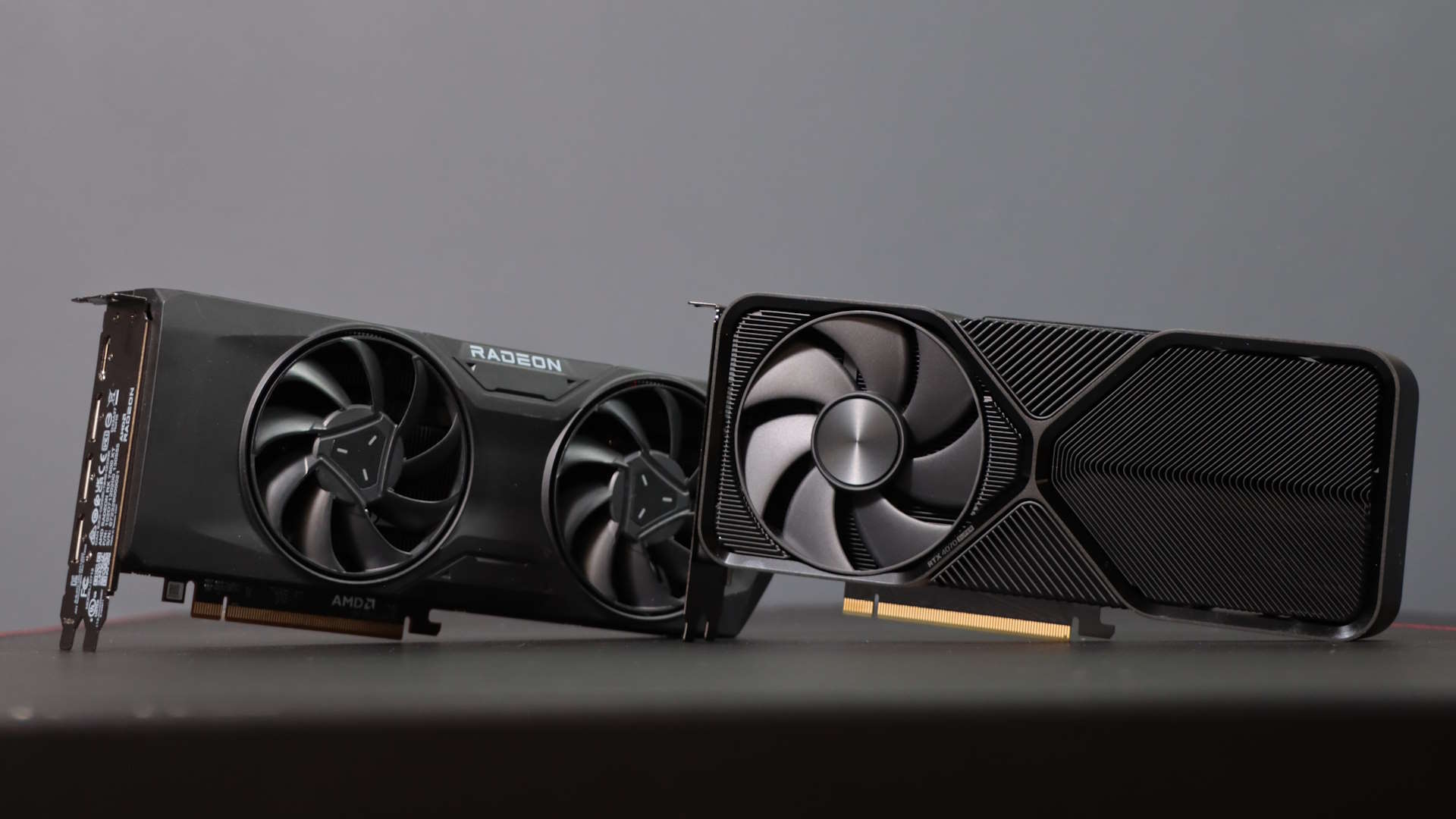
Nvidia RTX 4070 Super performance
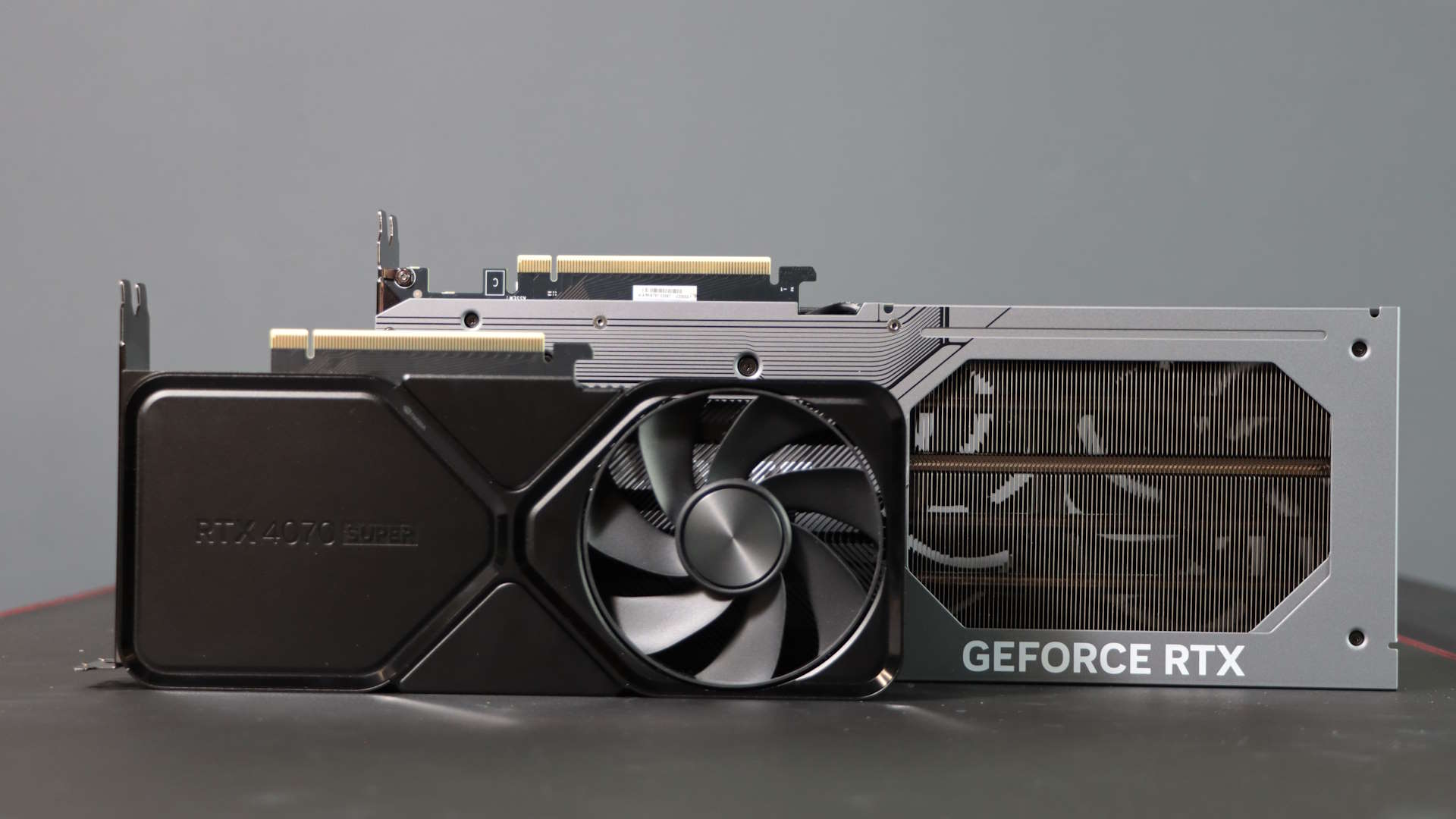
If you were hoping the RTX 4070 Super's 22% increase in CUDA core count over the RTX 4070 would be commensurate with a similar increase in gaming frame rates I'm afraid I am about to disappoint you. The closest we've seen in our own benchmarking suite is an ~18% spike at 4K in Cyberpunk 2077, though it is worth noting that's based on native ray traced performance which only sees your average frame rate jumping from 17 fps to 20 fps.
On average, the performance lead for the Super over its RTX 4070 forebear is 12% at 1440p and 13% at 4K. Those numbers aren't bad considering Nvidia is releasing this new card at the same $599 price point as the previous card, and more performance for the same money can only really be a good thing, eh?
But it highlights there is only so much a bunch more CUDA cores and a little extra cache can do in terms of delivering a big performance punch.
Even in the Blender rendering benchmarks, which you might expect to be more dialled in to the increased parallel processing power those extra cores might afford, only shows a ~17% improvement in performance.
Which, as I'm writing this, does all sound a bit negative. But there is more to a graphics card's performance than pure core count numbers, so I don't think anyone really expected to see a consistent 20%+ frame rate boost.
What's arguably more important, especially for Nvidia, is that the extra performance bump the Super card enjoys comfortably places it well ahead of the RX 7800 XT. Where it was a close run thing against the original RTX 4070—made all the trickier by the $100 price difference in favour of AMD—it's now a more realistic price/performance delta. It's about 20% more expensive and now around 20% faster, at both 1440p and at 4K, too.
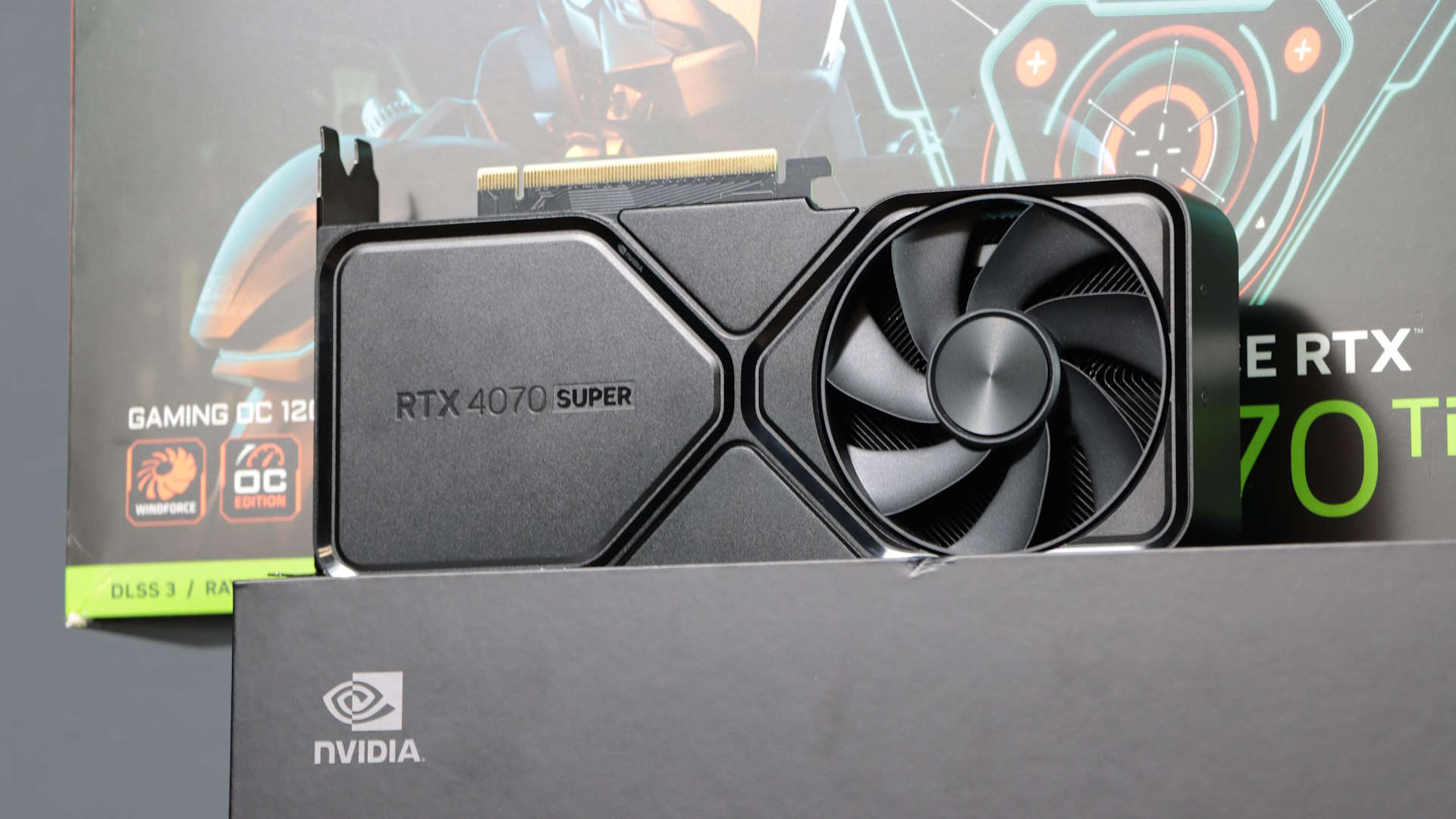
We now need to look at that real-world performance with these cards and not just the raw GPU power.
And when we're talking about the RTX 4070 Super as a graphics card that will consistently run at well over 100 fps in the latest games, in a real-world 1440p gaming experience, then that's pretty tasty. We run all of our standard GPU testing at native resolutions, without any upscaling or frame generation frosting on top—we are testing the performance of the silicon, and most especially in relative terms, too.
But given the swathe of modern titles that utilise both DLSS and FSR, from Nvidia and AMD respectively and how effective it is, that's how a lot of gamers are going to experience their new graphics cards. And so we now need to look at that real-world performance with these cards and not just the raw GPU power.
Given that AMD now has its own version of frame generation, it feels like the right time to be benchmarking that side of things alongside the silicon performance. And so in our real-world benchmarks you'll see, where games support it, we use frame generation and we use the version that users at home would use, too. So, for an RTX 3080 you're going to use AMD FSR 3.0 with frame generation for a game where it's supported, because Nvidia hasn't seen fit to furnish your ageing GPU with support for its own Frame Generation tech.
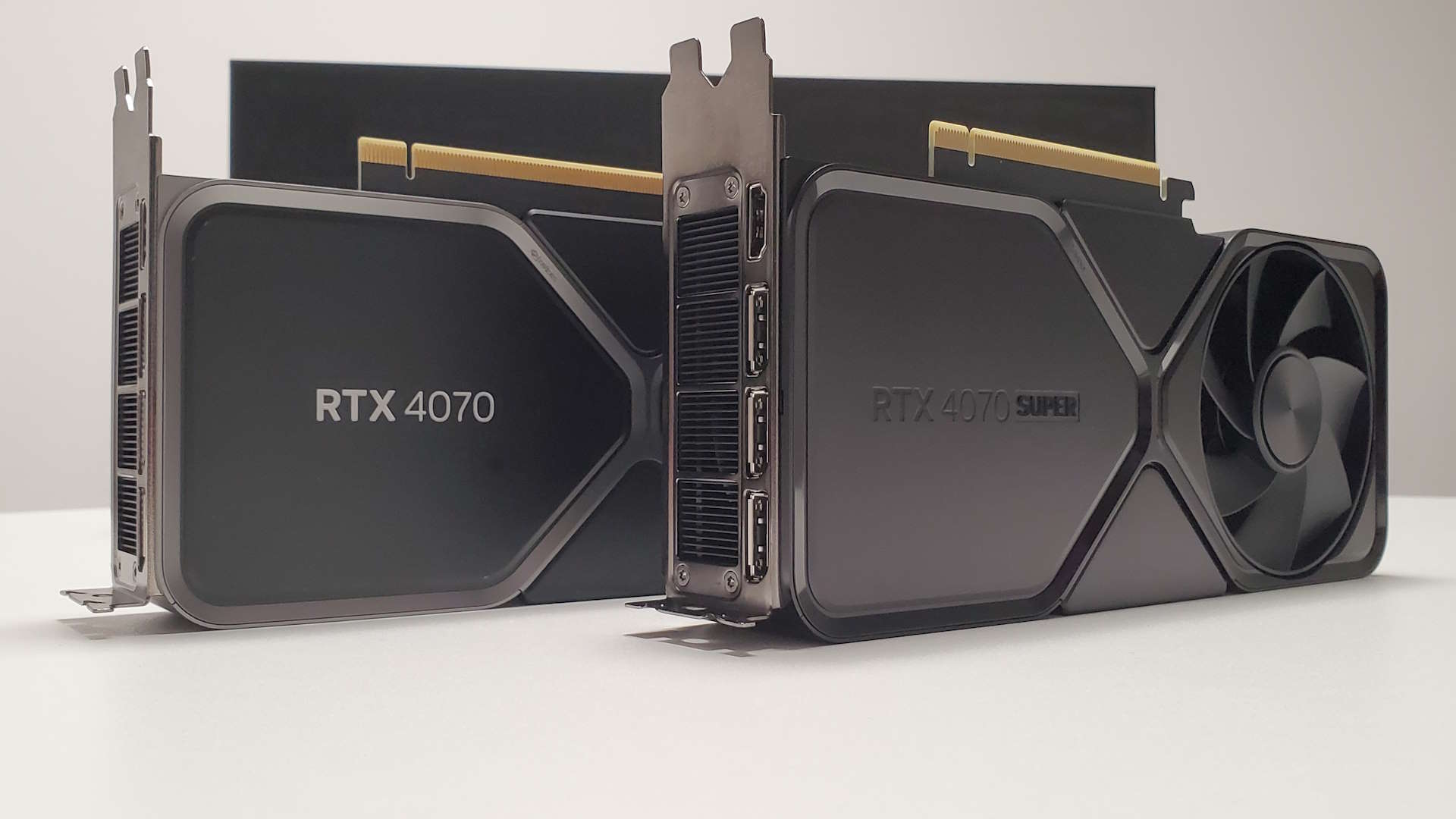
But that only really serves to highlight the "RTX 3080 with benefits" tag I originally stuck on the RTX 4070… only more so with the RTX 4070 Super. In fact, it's now really pushing the RTX 3080 Ti in standard performance and completely outshining it in these real-world metrics. This is a card that, at 1440p will pretty regularly match a 144Hz or 165Hz monitor's refresh rate with its frame rate. And that's a techie combo and a level of smoothness you're always going to be chasing.
While there is a certain amount of disappointment at the relative closeness in terms of frame rate between the RTX 4070 and its new Super sibling, it's how close it gets in terms of performance to the RTX 4070 Ti that really shines out of my testing. It's within 10% of a card that's fully 33% more expensive, and those are the sorts of maths I can get behind. In fact, given the similarity of GPU and memory, I'm actually rather tempted to break out Afterburner and see how far I can push the frequency of the RTX 4070 Super, because it's pretty much just the faster clock speed of the Ti card which gives it the edge.
My thermal and power testing highlights once more how good the 4N process has been in making Ada one of the most efficient GPU architectures around. Sure, the RTX 4070 Super has a slightly higher TGP, but it's only 15W on average higher than the original RTX 4070, and offers a higher performance per Watt figure, too.
Nvidia RTX 4070 Super analysis
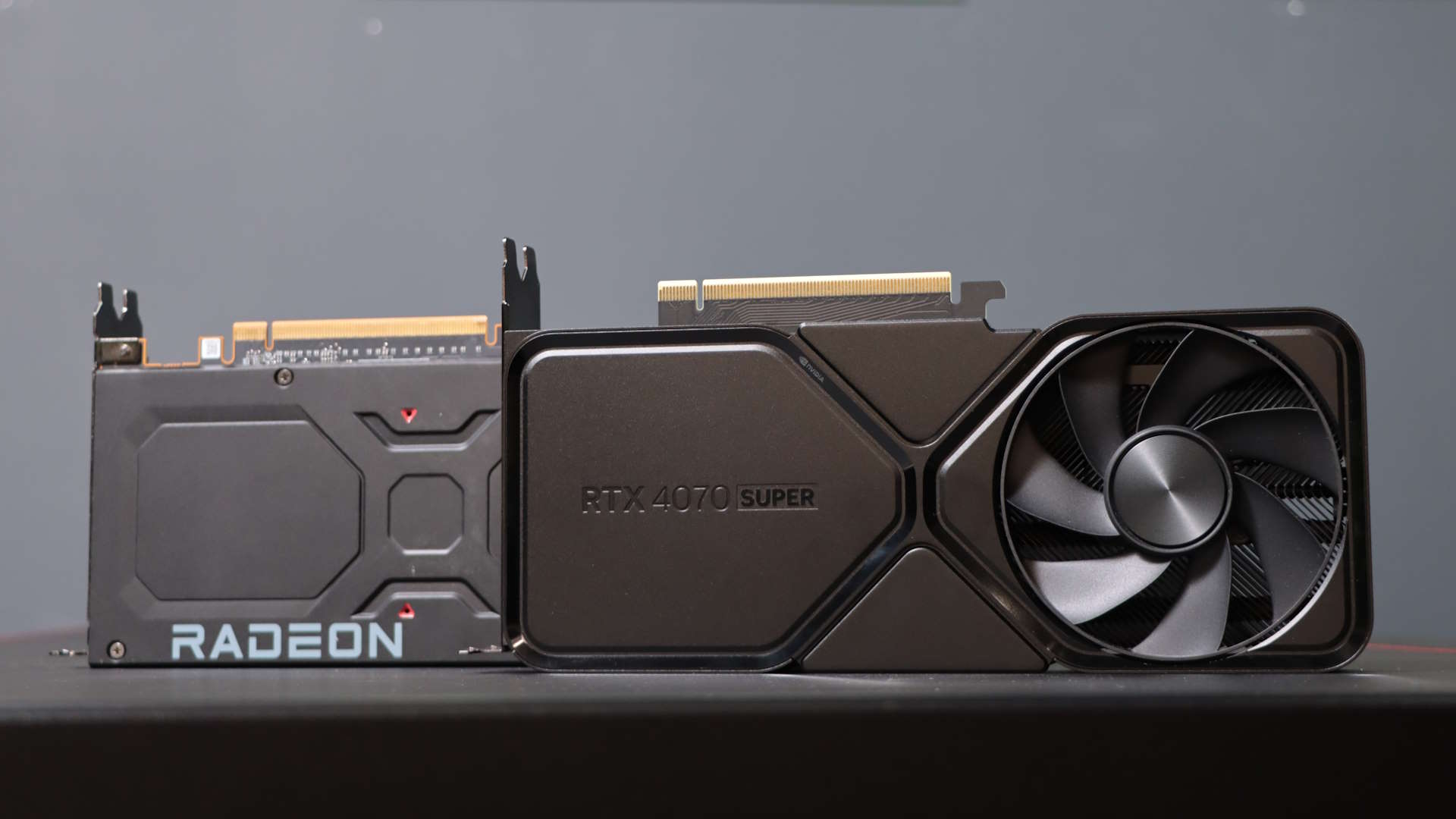
These are cannibal cards, released to feast on the brains of the next model up the stack.
Remember when I said I couldn't remember such a January of GPU releases? Well, it might be unprecedented, but now I've had my hands on the RTX 4070 Super it is absolutely understandable. These are cannibal cards, released to feast on the brains of the next model up the stack, and if the RTX 4070 Ti Super wasn't being released a matter of days after this updated GPU it would collapse any demand that card still harboured.
The performance increase over the original RTX 4070 is arguably the thing that we focused on ahead of launch, but it's the comparative numbers against the RTX 4070 Ti that are likely to foster most of the discussion around this first Ada refresh card. It's so close to the performance of the similarly AD104-toting Ti that it makes the older card look even weaker. It is, after all, the card that was meant to launch at $899 as the RTX 4080 12GB before Nvidia saw sense and unlaunched it before renaming it and cutting the price.
And now we've got a $599 GPU that's only not hitting the same frame rate levels because its own AD104 GPU isn't running with the same power limits as the more expensive card.
It almost feels like a bit of a slam dunk for the RTX 4070 Super. And it probably would be if it wasn't for the fact that Nvidia's keeping the old RTX 4070 around at a cut-down price, and a cut-down price that's likely to get more cut down in the near future, too. That's all down to AMD's still impressive, and cheaper RX 7800 XT.
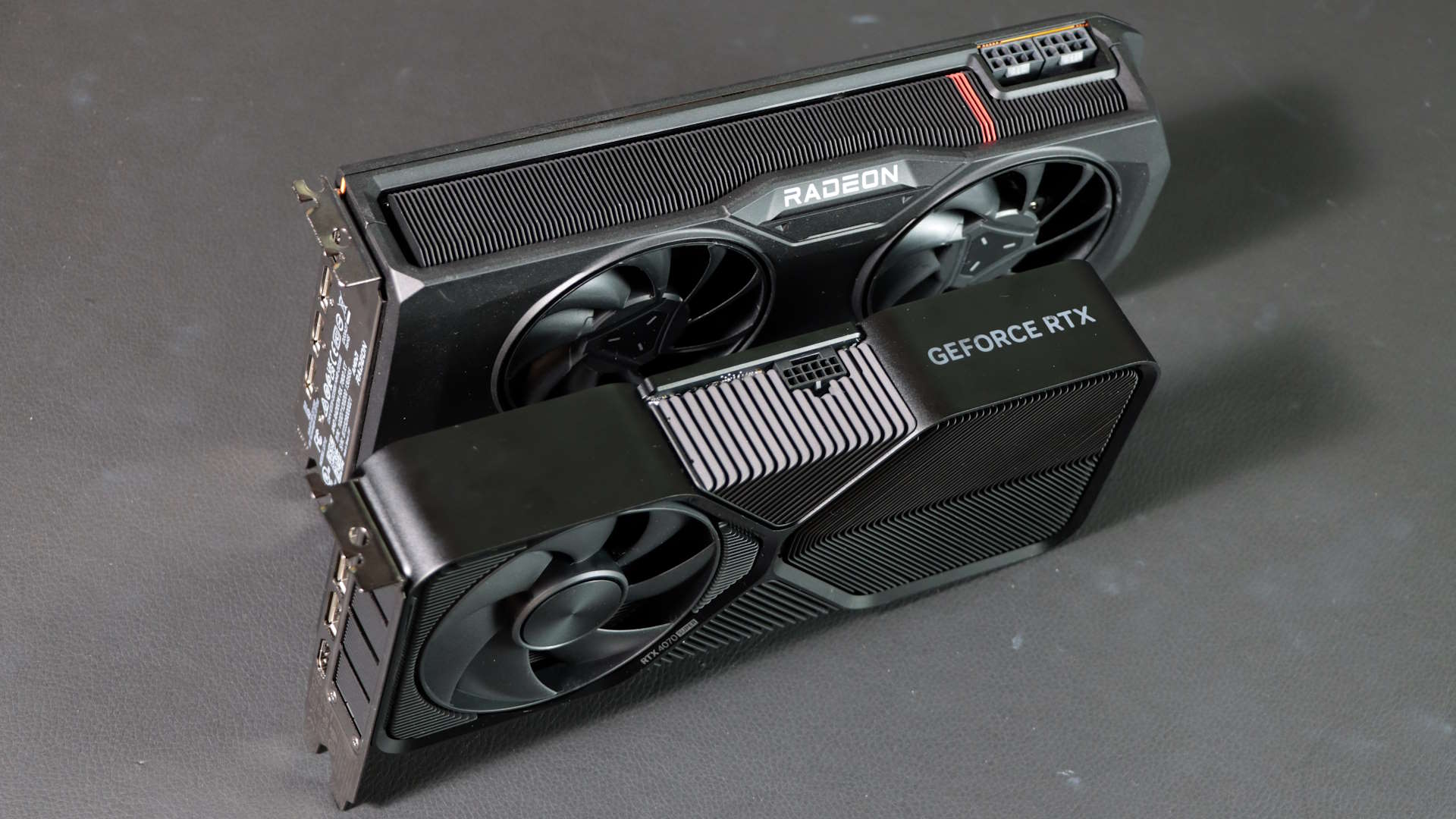
The RTX 4070 Super is comfortably quicker than AMD's mighty mid-ranger, but it's also fully $100 more expensive. That price delta is matched by the performance delta, which makes it feel like a tangible step up, a genuinely different tier of card. Which almost makes the comparison between them less relevant.
It looks like Nvidia wanted to keep the old RTX 4070 around, with a price drop, to be more of a direct price point competitor with the AMD card. Which is one of the main reasons I think we'll see the old RTX 4070 at a more regular ~$499 level pretty soon.
But that doesn't do great things for the RTX 4070 Super as a value proposition. In reality it's only 10 - 18% faster than the older card—though closer to the RTX 4070 Ti as I've said—and if the price is a solid 20% more it's harder to justify.
I wish Nvidia had either been braver or less penny-pinching and released the RTX 4070 Super at $549.
It feels like Nvidia was forced into this position, and would really rather not have had to keep the straight RTX 4070 around full-time. It has, after all, now retired both the RTX 4070 Ti and RTX 4080 with their own Super replacements on the way this month, arguably because they don't have as much AMD-shaped competition.
As I said before, I wish Nvidia had either been braver or less penny-pinching and released the RTX 4070 Super at the same $549 price point as it's cut the remaining RTX 4070 to. Then it wouldn't have had to keep the older card around any longer and cleaned house against the RX 7800 XT.







